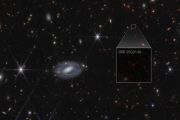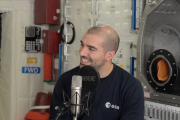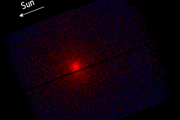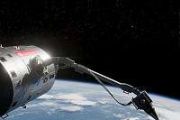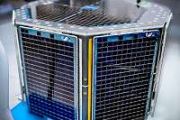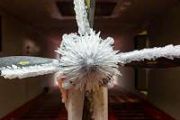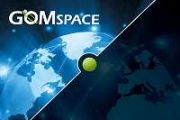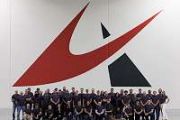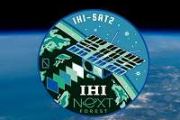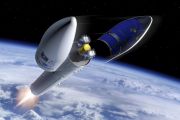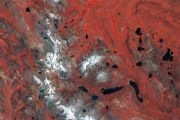
Copernical Team
CADRE rover getting prepped for testing
 An engineer prepares a small rover - part of NASA's CADRE (Cooperative Autonomous Distributed Robotic Exploration) technology demonstration that's headed to the Moon - for testing in a thermal vacuum chamber at the agency's Jet Propulsion Laboratory in Southern California in October 2023.
Slated to arrive at the Moon in spring 2024 as part of NASA's CLPS (Commercial Lunar Payload Services)
An engineer prepares a small rover - part of NASA's CADRE (Cooperative Autonomous Distributed Robotic Exploration) technology demonstration that's headed to the Moon - for testing in a thermal vacuum chamber at the agency's Jet Propulsion Laboratory in Southern California in October 2023.
Slated to arrive at the Moon in spring 2024 as part of NASA's CLPS (Commercial Lunar Payload Services) MDA Selects Spacex to launch Chorus Constellation
 MDA Ltd. (TSX: MDA) has announced at its Earth Insight customer conference that it has selected SpaceX to be the launch service provider for CHORUS, MDA's next generation Earth observation constellation. CHORUS is targeted to launch on SpaceX's Falcon 9 rocket in the Q4 2025 launch window from Florida.
A collaborative multi-sensor constellation, CHORUS will bring together diverse and uniqu
MDA Ltd. (TSX: MDA) has announced at its Earth Insight customer conference that it has selected SpaceX to be the launch service provider for CHORUS, MDA's next generation Earth observation constellation. CHORUS is targeted to launch on SpaceX's Falcon 9 rocket in the Q4 2025 launch window from Florida.
A collaborative multi-sensor constellation, CHORUS will bring together diverse and uniqu Lockheed Martin contracts Terran Orbital for 36 satellite buses for SDA T2 constellation
 Lockheed Martin has partnered with Terran Orbital Corporation to construct 36 satellite buses for the Space Development Agency's (SDA) Tranche 2 Transport Layer (T2TL) Beta constellation. This decision comes as part of a broader initiative to bolster the Proliferated Warfighter Space Architecture's (PWSA) functionalities, including improved technology, payload configurations, and system integrat
Lockheed Martin has partnered with Terran Orbital Corporation to construct 36 satellite buses for the Space Development Agency's (SDA) Tranche 2 Transport Layer (T2TL) Beta constellation. This decision comes as part of a broader initiative to bolster the Proliferated Warfighter Space Architecture's (PWSA) functionalities, including improved technology, payload configurations, and system integrat Putin says first segment of ISS replacement to orbit by 2027
 Russian President Vladimir Putin said Thursday that the first segment of the new space station that Moscow plans to construct to replace the ISS should be in orbit by 2027, despite recent setbacks.
Russia previously announced its intention to withdraw from the International Space Station (ISS), where its cosmonauts are permanently stationed and the country plays a key role.
The creation
Russian President Vladimir Putin said Thursday that the first segment of the new space station that Moscow plans to construct to replace the ISS should be in orbit by 2027, despite recent setbacks.
Russia previously announced its intention to withdraw from the International Space Station (ISS), where its cosmonauts are permanently stationed and the country plays a key role.
The creation Shenzhou 17 docks with Tiangong Space Station
 The Shenzhou XVII mission, carrying a trio of Chinese astronauts, successfully completed its docking procedure with the Tiangong space station late Thursday night. This rendezvous comes after a six-and-a-half-hour orbital journey initiated earlier in the day. The spacecraft connected with the front port of the Tianhe core module, the primary segment of the Tiangong station.
Upon completion
The Shenzhou XVII mission, carrying a trio of Chinese astronauts, successfully completed its docking procedure with the Tiangong space station late Thursday night. This rendezvous comes after a six-and-a-half-hour orbital journey initiated earlier in the day. The spacecraft connected with the front port of the Tianhe core module, the primary segment of the Tiangong station.
Upon completion Gearing up for EarthCARE
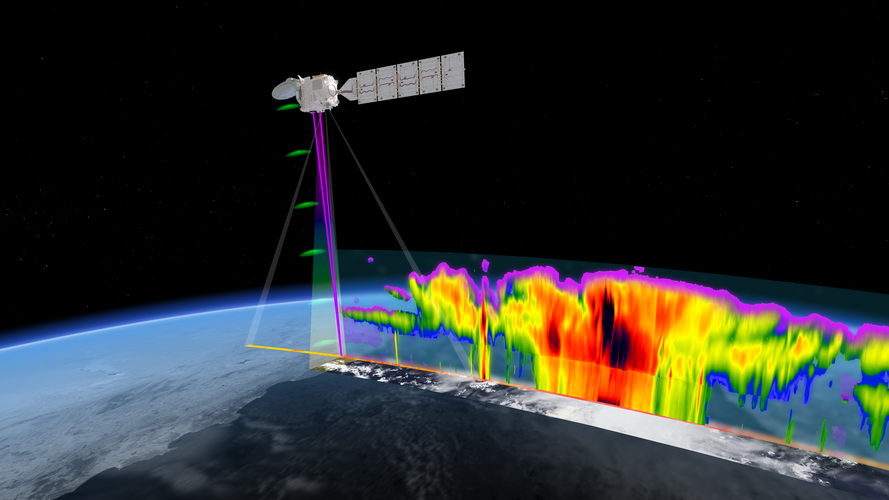
ESA and the Japanese Aerospace Exploration Agency are gearing up for a momentous milestone in Earth observation as launch of the EarthCARE satellite approaches.
Following years of rigorous development and extensive testing, the satellite is now undergoing its final round of tests in Europe before being shipped to the launch site early next year – bringing us one step closer to gaining unprecedented insights into the role that clouds and aerosols play in the climate system.
New mapping tools will find subsurface water ice on Mars
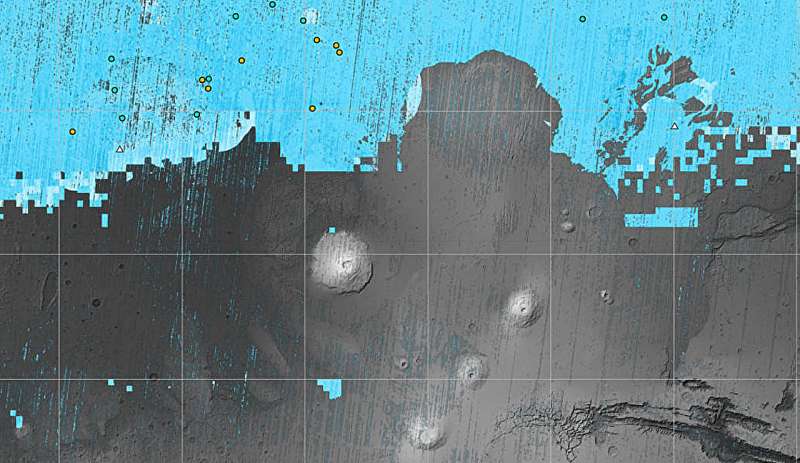
Refined mapping tools that identify subsurface water ice on Mars will help determine the best targets for robotic and human missions to the planet.
How to prepare for a trip to space
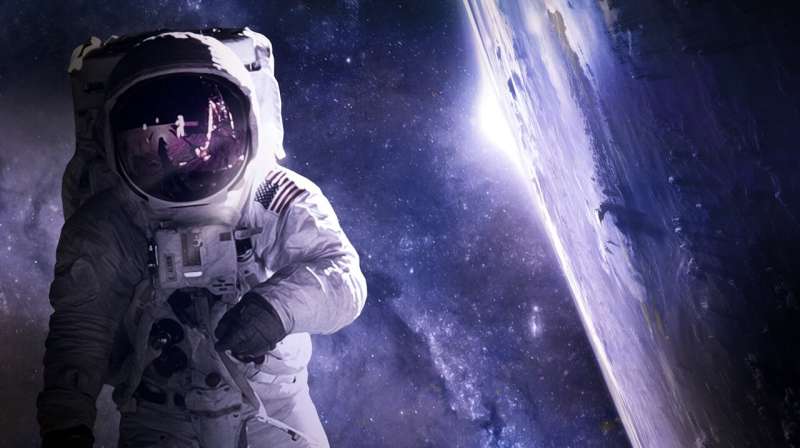
Aleksandra Stankovic is an aerospace psychologist and spaceflight biomedical researcher who studies how to optimize human performance and behavioral health in extreme operational environments. In this article, she describes how a person gets ready to travel to space.
The spaceflight environment presents many challenges—technical, physical, and psychological. With more people having access to space travel today than ever before, successful and safe spaceflights require varying levels of preparation before launch day.
For government astronauts, candidates undergo a rigorous two-year initial training period before qualifying for flight assignment. This training includes learning about Space Station and flight vehicle systems, studying orbital mechanics, becoming proficient in emergency procedures (like how to handle scenarios such as fire, cabin depressurization, or medical issues), conducting flight training in T-38 jets (to build quick decision-making skills in high-performance aircraft), and developing Russian language skills (since international space missions involve collaboration among astronauts from various countries).
To prepare for the microgravity environment of space, astronauts also participate in simulations of weightlessness, including parabolic flights and training in the Neutral Buoyancy Lab, a large swimming pool where astronauts practice conducting spacewalks and learn to perform tasks in their pressurized spacesuits.
Atmospheric Waves Experiment launching to space station to study atmospheric waves via airglow
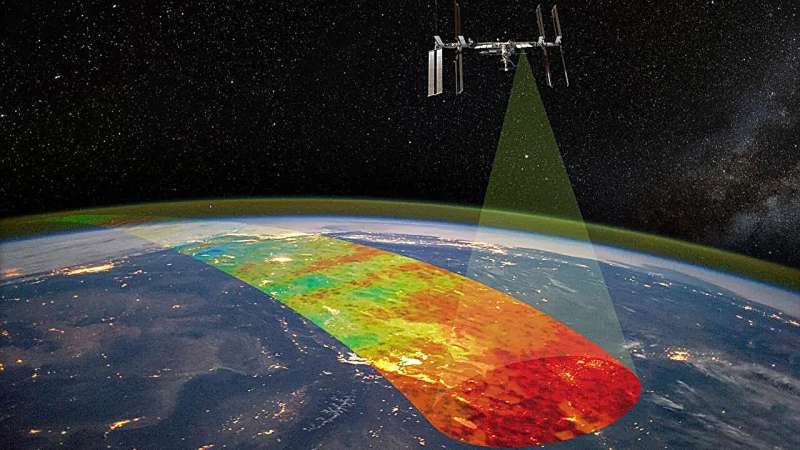
NASA's Atmospheric Waves Experiment, or AWE, mission is scheduled to launch to the International Space Station in November 2023, where it will make use of a natural, ethereal glow in Earth's sky to study waves in our planet's atmosphere.
Built by Utah State University's Space Dynamics Laboratory in North Logan, Utah, AWE will be mounted on the exterior of the space station.
Space is getting crowded with satellites and space junk. How do we avoid collisions?
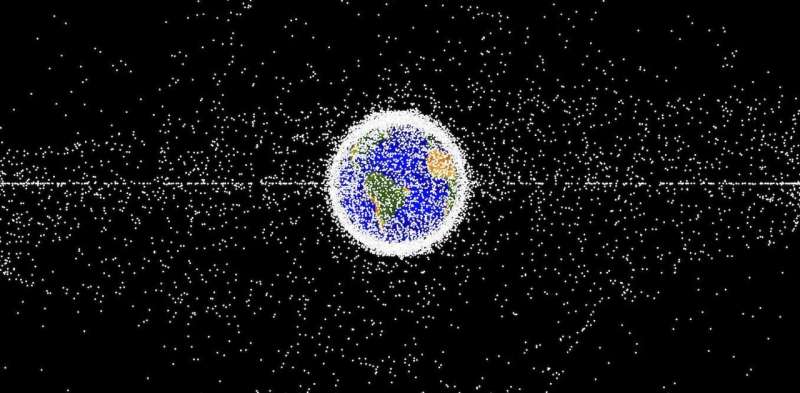
Reports this week suggest a near-collision between an Australian satellite and a suspected Chinese military satellite.
Meanwhile, earlier this month, the US government issued the first ever space junk fine. The Federal Communications Commission handed a US$150,000 penalty to the DISH Network, a publicly traded company providing satellite TV services.
It came as a surprise to many in the space industry, as the fine didn't relate to any recent debris—it was issued for a communications satellite that has been in space for more than 21 years. It was EchoStar-7, which failed to meet the orbit requirements outlined in a previously agreed debris mitigation plan.
The EchoStar-7 fine might be a US first, but it probably won't be the last. We are entering an unprecedented era of space use and can expect the number of active satellites in space to increase by 700% by the end of the decade.
As our local space gets more crowded, keeping an eye on tens of thousands of satellites and bits of space junk will only become more important.






